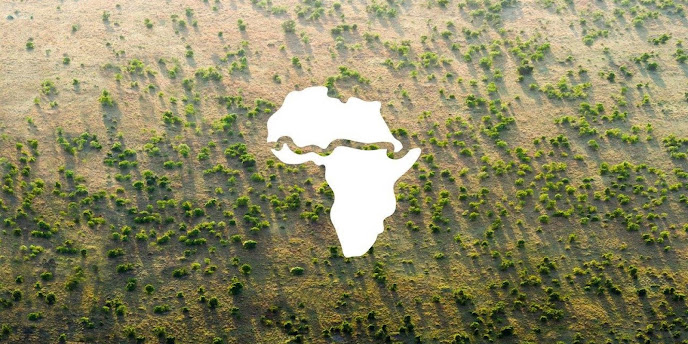Sahel's Rainfall Variability: Future Projection and Uncertainty
Given the extreme vulnerability of the Sahel to rainfall variability (discussed in the overview), accurate future precipitation projection is crucial for the Sahelian people to develop adaptation and mitigation strategies. As can be seen from the previous blogs, anthropogenic activities have large impacts on Sahel's rainfall variability. However, the uncertainties in their projection simulations are substantial. Results under the framework of phase 3 and 5 of the Coupled Model Intercomparison Project (CMIP 3-5) vary from model to model, with some models projecting an increase in precipitation by the end of the 21st century, while others projecting a decrease in 2100 over the Sahel (Caminade & Terray, 2010; Monerie et al., 2017; Yan et al. 2019).
Monerie et al. (2020a) examine the reasons behind the inter-model difference of Sahel's rainfall projections using CMIP 5 and the newly developed CMIP 6. They classify the causes of change of precipitation into three terms: thermodynamic changes (changes in specific humidity), dynamic changes (atmospheric circulation changes) and combined changes in specific humidity and atmospheric circulation (cross non-linear changes). Their results indicate that the model uncertainty is mainly associated with atmospheric circulation (dynamic change) responses to future GHG-induced warming in different models (Figure 1b). In contrast, the uncertainties regarding thermodynamic changes and cross-term components are less significant (Figure 1a, c). It can also be seen from Figure 1 that the results of CMIP6 show the same pattern as the CMIP5 which unfortunately means that the uncertainties in the new generation of models did not improve. Monerie et al. (2020a) also find that the large spread of atmospheric circulation changes is mainly attributed to the uncertainties in simulating Sea Surface Temperature changes, highlighting differential warming in the Nothern Hemisphere, which is also supported by Park et al. (2015).
 |
| Figure 1. Inter-model spread in a. thermodynamic changes (ΔPtherm), b. dynamic changes (ΔPdyn) and c. cross-term components (ΔPcross) for CMIP 5 (coloured) and CMIP 6 (black) ensembles (Monerie et al. 2020a). Although the uncertainties on the magnitude of future precipitation change over the Sahel is high, there is growing consensus on Sahel's precipitation change pattern. Many climate models and under various future emission scenarios all simulate a drying over the western Sahel and an increase of summer precipitation over the central Sahel (Monerie et al., 2017; Akinsanola & Zhou, 2018; Biasutti, 2019; Monerie et al. 2020a,b). Research has attributed this zonal contrast to two opposing mechanisms, the direct effect of GHGs emission increase (fast response) and the indirect effect via SST changes (slow response). Warming over Africa and the Northern Hemisphere (relative to Southern Hemisphere) favours precipitation increase in the Sahel. At the same time, the rise of the SSTs tends to enhance the tropospheric static stability and subsidence over the land, resulting in a reduction of Sahel's rainfall (Gaetani et al., 2017; Hill, Ming & Zhao, 2018; Monerie, Pohl & Gaetani, 2021). Monerie, Pohl & Gaetani (2021) also propose that due to the different temporality of the two responses, decomposing their relative contribution over time can help us better understand their effect and design mitigation strategies accordingly. They find that the precipitation change in the central Sahel is primarily driven by the fast response (Figure 2b) and happens at a higher rate than the western Sahel, in which the slow response contributes more (Figure 2c). According to this result, they then find that the mitigation strategies that diminish the fast response could reduce the impact of climate change on Sahel's rainfall successfully (Monerie, Pohl & Gaetani, 2021). |
 |
| Figure 2. Multi-model mean change in a) the global mean surface temperature warming (K), b) central Sahel precipitation (mm per day) and c) western Sahel precipitation (mm per day) for SSP5-85 response (black), fast (green), slow (blue) and resonstructed (red) responses. Grey shading is the inter-model spread and the residual is shown in purple line (Monerie, Pohl & Gaetani, 2021) |
Despite the significant uncertainties on the future projections, it is inevitable that anthropogenic activity, especially GHGs emissions, have detrimental influences on Sahel's rainfall, and their mitigation is urgent.



Comments
Post a Comment